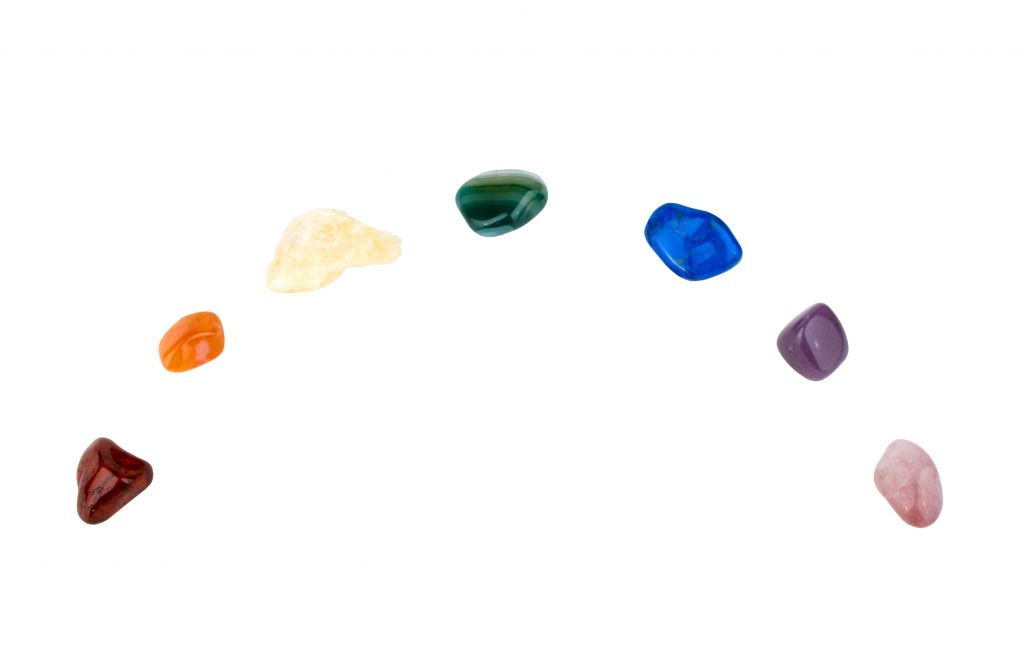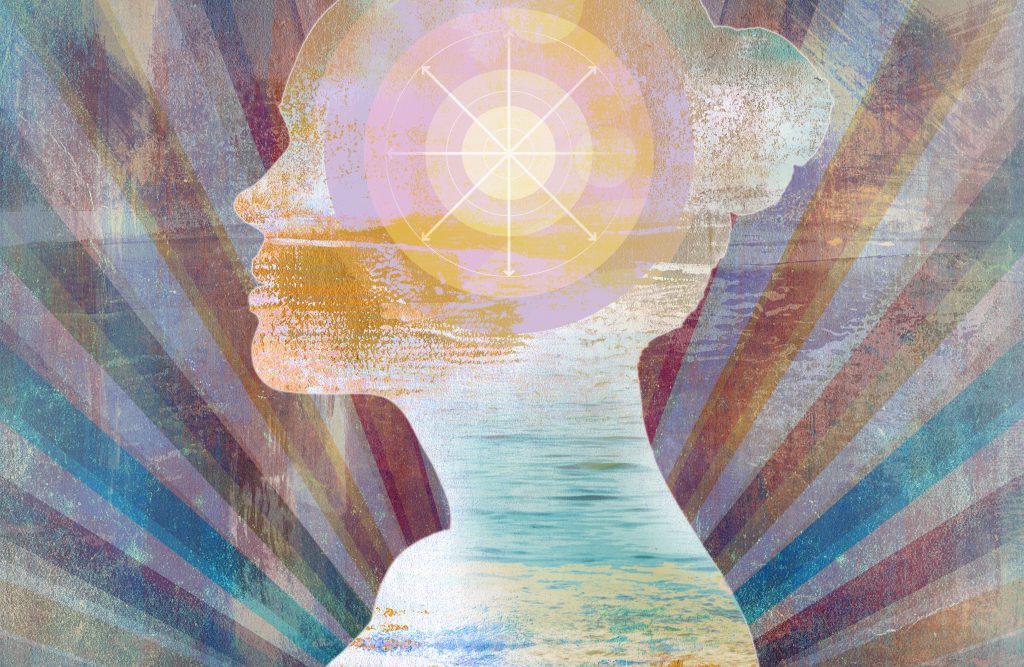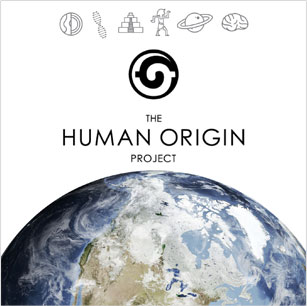Melatonin is the main hormone made by the pineal gland in the human brain.
Its primary function is to guide the circadian rhythm of the body for waking and sleep cycles. Through the detection of light, the pineal gland releases melatonin in darkness. Light from the sun decreases the release of melatonin from the pineal gland.
However, new research reveals how melatonin acts as the master hormone over the entire body.
The pineal gland is now understood to conduct the entire endocrine system. Its hormone, melatonin guides the release of all other hormones throughout the body.
Melatonin is anti-inflammatory, decreases blood pressure, and a powerful anti-oxidant. It also influences fertility, growth, the immune system, and weight loss.
Melatonin is the hormone guiding the circadian body clock. But its higher function as a lead of the endocrine system controls organs all over the body.
In this article, we’ll answer what is melatonin with its full role in the brain and body.
How melatonin is made in the brain and body
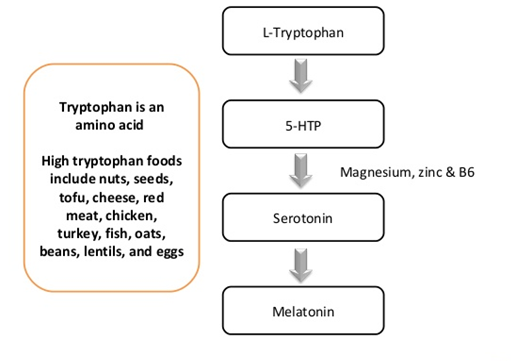
Melatonin is made from the amino acid tryptophan, found in certain food sources.
Melatonin belongs to a chemical molecule group called biogenic amines. In nature, it’s found in animals and plants.
It’s made in a four-step pathway from its precursor: Tryptophan. Foods rich in tryptophan include nuts, seeds, cheese, red meat, chicken, turkey, fish, oats, beans, lentils, and eggs.
Tryptophan converts to melatonin in the pineal gland. (1)
Here’s how:
- Dietary tryptophan is absorbed into the bloodstream and circulated through the body including the pineal gland.
- In the pineal gland, tryptophan is converted to serotonin
- Serotonin is then converted to melatonin
Serotonin is produced from tryptophan in the pineal gland. It undergoes a two-step process to form melatonin. Both the production and release of melatonin is dependent on light exposure to the eyes.
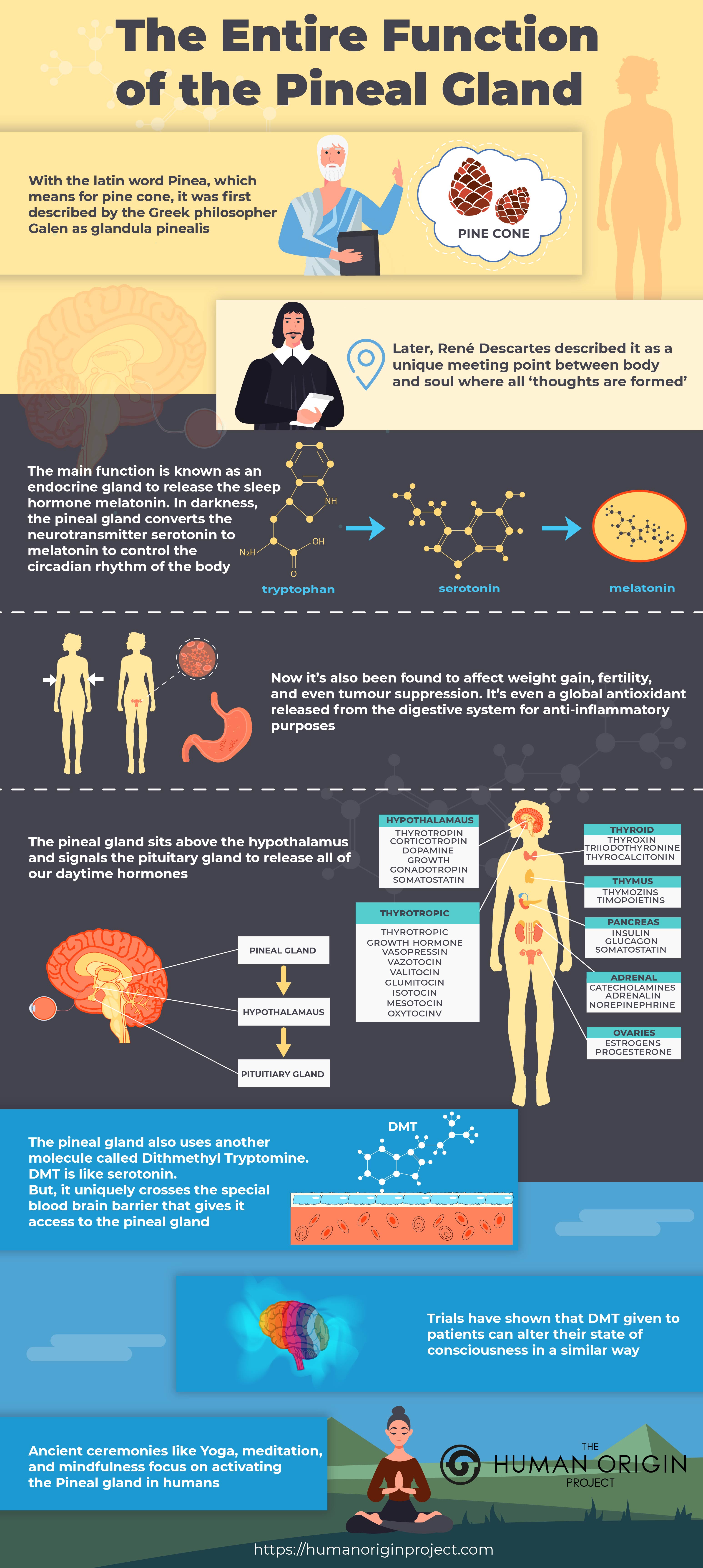
During daytime or light hours, melatonin production in the pineal gland decreases. In darkness, or absence of light, the pineal gland produces melatonin.
The half-life of melatonin is roughly 20 minutes in the bloodstream. It then circulates for around 12 hours. The pineal gland is the only organ to release melatonin into the blood. Melatonin is formed and then released immediately, rather than stored.
How melatonin works in the brain
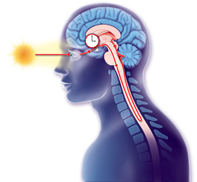
The pineal gland acts as the third eye to release melatonin.
The pineal gland and melatonin are the body’s internal visual system. As the third eye, the pineal gland contains visual cells. These detect signals from the eye, via the hypothalamus. They are like the rod and cone cells of the eye.
During daytime, light detected in the eyes, signal to the hypothalamus and relay to the pineal gland. Light decreases the amount of serotonin converted to melatonin in the pineal gland.
In the darkness, serotonin converts to melatonin. It begins a rhythm to release melatonin to the bloodstream. After the sun sets, melatonin production begins, and after four hours of darkness, melatonin levels reach their peak. It lines up with the time to sleep.
As melatonin is released from the pineal gland, it feeds back to the suprachiasmatic nucleus (SCN) in the hypothalamus. It entrains the circadian rhythm that signals the brain to sleep. There are melatonin receptors in the SCN (MT1 and MT2) that allow the SCN to detect melatonin.
How melatonin works in the body
Beyond the circadian sleep cycle, the pineal gland acts as the master endocrine gland.
Throughout the body, melatonin acts as a signal for darkness. Organs inside the body can’t detect the rise and fall of the sun. The presence of melatonin tells them night time is coming.
Melatonin as the master endocrine hormone
The endocrine system is a series of glands that release hormones in the body. These hormones regulate nearly every organ and function in the body.

Melatonin released from the pineal gland influences the entire endocrine system.
While the hypothalamus was once thought to be the highest endocrine gland, the pineal gland and melatonin are the actual conductors.
Melatonin has many roles all over the body including:
- Broad spectrum – antioxidant and anti-inflammatory agent
- Heart disease – melatonin seems to be cardioprotective.
- Balancing cholesterol – melatonin may decrease LDL or bad cholesterol.
- Blood pressure – decreases blood pressure for sleep.
- Digestive health – there are 400-500 cells in the digestive system to release melatonin to decrease inflammation.
- Fertility and sex drive – it acts on menstruation in women and menopause. It also works on the testes in men to release testosterone.
- Stress, mental health, and brain health – shown to have a calming and neuroprotective role against neuro-degenerative disease.
- Immune system – Controlling immune cell and anti-tumor cells.
- Insulin – melatonin regulates expression of GLUT 4 transporter. Weight gain and blood sugars are related to insulin resistance.
- Cancer – women with breast cancer and men with prostate cancer have lower melatonin levels. Some studies show melatonin as an anti-tumor agent.
- Longevity and anti-aging – melatonin appears to decrease the aging process by stopping DNA oxidation damage.
Conclusion:
Melatonin is the main pineal gland hormone. It controls sleep and circadian rhythm by timing signals to the brain via light.
However, its role extends to all endocrine glands and hormone release all over the body. It also affects organ-specific sites, including the digestive system having anti-inflammatory, anti-cancer, weight management, and anti-aging benefits.
Now it’s up to you. What do you find so fascinating about melatonin?
Leave your thoughts in the comment section below.


 What is melatonin? The mysterious sleep hormone released from the pineal gland.
What is melatonin? The mysterious sleep hormone released from the pineal gland. 